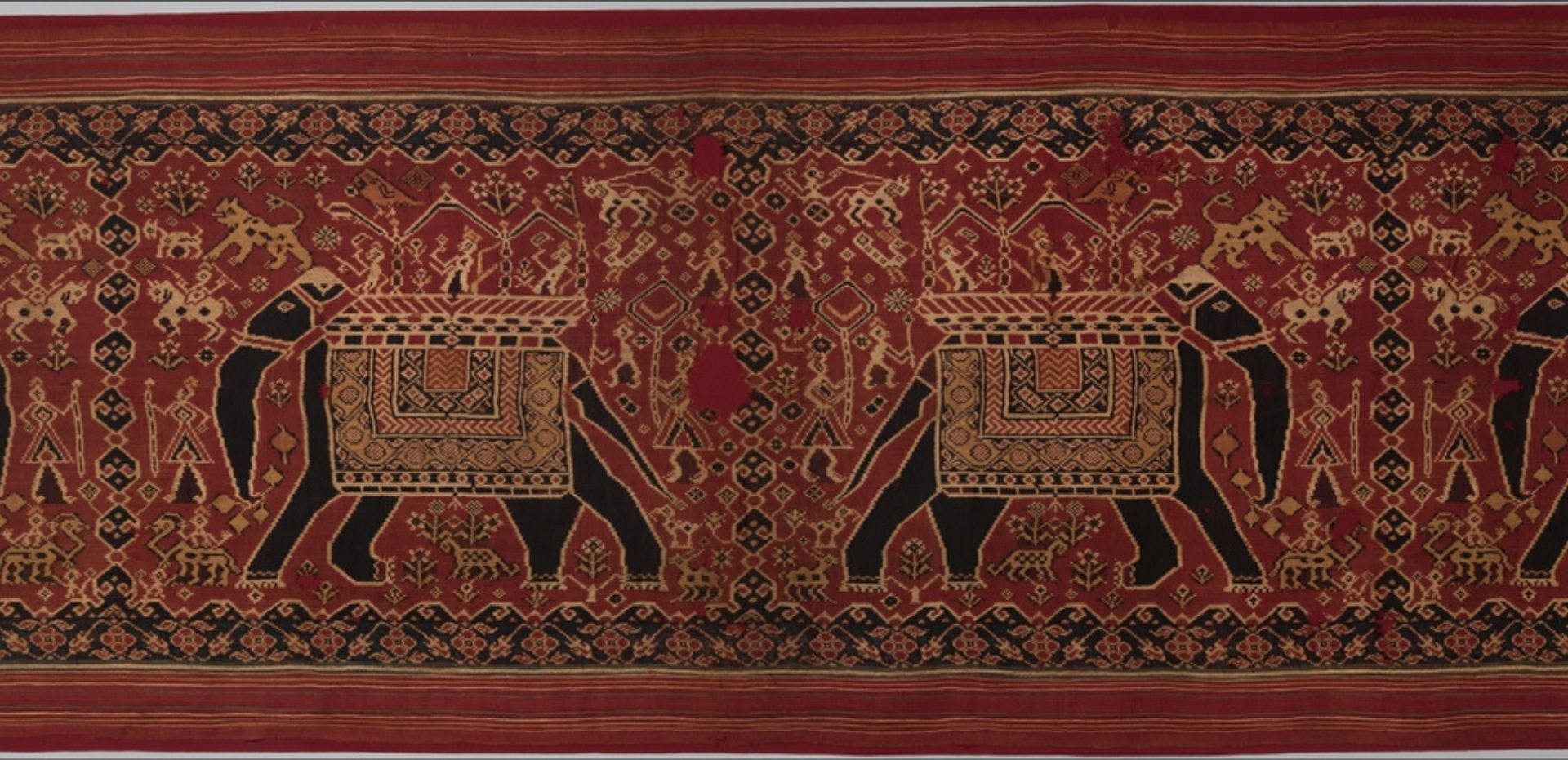India and Indonesia's Ikat Connect
BOOKMARK
India and Indonesia, have a deep history of cultural ties that have evolved over centuries. These connections are rooted in their trade relationships and close cultural ties. Interestingly, Indian textiles, especially the ikat fabrics played a very important role in this cultural relationship. The fine Ikat textiles made in India were highly valued by the Indonesian elite and were used for wedding dowries, ceremonial dresses, and even objects of worship.
In fact the very term "ikat" is derived from the Malay-Indonesian word "mengikat," which means to tie or bind. This etymology is fitting, as the ikat process relies on precisely tying and dyeing threads before weaving to create intricate patterns.
Among the various forms of ikat weaving, the most intricate and challenging is the 'Double Ikat' weave, demanding precise mathematical precision. Interestingly, only three countries worldwide practise the double ikat weave: India, Indonesia, and Japan. The journey of the double ikat technique from India to Indonesia is a fascinating tale.
Historically, Gujarat was renowned for its fine textiles, coveted globally. Ships from ports like Khambhat and Bharuch, laden with textiles, would set sail for Southeast Asia, where these fabrics held immense value. The highest form of double ikat weaving, known as 'Patola' or 'Patolu,' was crafted in the historic town of Patan in North Gujarat. Even today, due to its intricacy, Patan Patola remains one of India's most expensive and exclusive weaving traditions.
In Indonesia, the primary patrons of Patola textiles were the royals and nobility of Java and Bali, where it became a symbol of status. For instance, in Java, the sultan and his court members adorned waist-sashes and trousers made from Patola textiles, featuring a variety of geometric patterns inspired by stylized flowers and leaves. More affordable Patola fabrics were transformed into formal 'selendang' or 'shoulder cloths' for noblewomen. These textiles also played a significant role in Indonesian Hindu religious rituals and temple adornments in Bali.
Apart from Patola in Gujarat, Ikat weaving was also popularly practised along the eastern coast of India from Odisha, down to the Coromandel coast.
The demand from S E Asia, meant a steady trade and hence production of Ikats from the East Coast. Over time Ikat also took interesting new forms. Take for example the famous Telia Rumal from Telangana. A double ikat - where the warp and weft are dyed, the Telia Rumal gets its name from the process it was made with and purpose it was used for. The woven fabric was dipped in oil or Tel to ensure a rich, lasting colour, and it was used as a square cloth - a rumal for the headgear of nobles and officials of the Nizam.
Among all the ikats that were shipped out of India, none was as special however as the Patan Patola.
Owing to the popularity of Patola textiles, local weavers began to replicate the double ikat technique and Patola patterns. This gave rise to 'Tenun' or 'Woven' Double Ikat, primarily practised in the village of Tenganan in Eastern Bali. The patterns seen in Tenun Ikat encompass local mythical figures, plants, animals, and abstract motifs, each deeply rooted in local beliefs. For instance, horses symbolize wealth, while snakes, often depicted in zigzag patterns, are associated with fertility.
During the Dutch colonial period in Indonesia, the Dutch monopolized the Patola trade, even using it as a currency to obtain spices. Remarkably, Indian Patolas continued to be imported into Indonesia as late as 1945.
Today, local Tenun Double Ikat has taken the forefront in Indonesia, replacing the prominence of Patan Patola. Nevertheless, the enduring legacy of Double Ikat Patola lives on through centuries-old textiles that can be found on display in museums across Indonesia and around the world.
You can buy our fine selection of Ikat Silk Cushion Covers as well as lovely Telia Rumals from Peepultree.
Peepul Tree World powered by Live History India, is a first of its kind digital platform aimed at helping you Rediscover the many facets and layers of India’s great history and cultural legacy. Our aim is to bring alive the many stories that make India and get our readers access to the best research and work being done on the subject. If you have any comments or suggestions or you want to reach out to us and be part of our journey across time and geography, do write to us at contactus@peepultree.in










